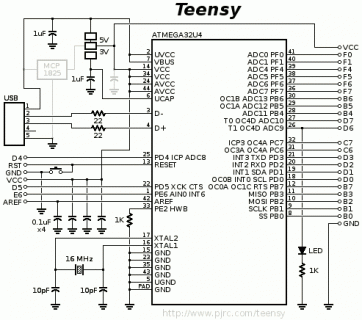Hello
I am just learning to code microcontrollers and my current project is to build a MIDI controller using a teensy 2.0. I need at least six pins with interrupt capability as I am using three encoders. I have started prototyping with an arduino and I was able to make it work by using the arduino library "EnableInterrupt.h", which allows me to use any pin as an interrupt. So with the arduino (UNO) I have had no problems but I cannot figure out how to do this with a teensy, or whether it is possible at all.
Any help would be appreciated.
Cheers!
I am just learning to code microcontrollers and my current project is to build a MIDI controller using a teensy 2.0. I need at least six pins with interrupt capability as I am using three encoders. I have started prototyping with an arduino and I was able to make it work by using the arduino library "EnableInterrupt.h", which allows me to use any pin as an interrupt. So with the arduino (UNO) I have had no problems but I cannot figure out how to do this with a teensy, or whether it is possible at all.
Any help would be appreciated.
Cheers!






